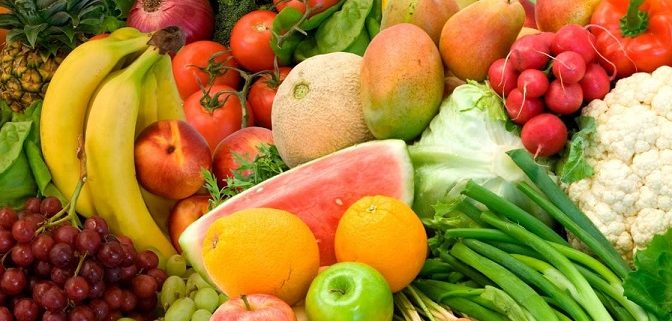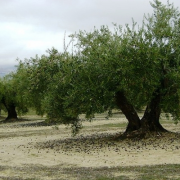Spain: horticultural exports rise 1% in 2017 to exceed € 12,700M
The Spanish export of fresh fruits and vegetables in 2017 increased by 1% compared to 2016, totaling 12,704 million euros. In volume, they registered an increase of 0.5%, standing at 12.6 million tons, according to data from the General Directorate of Customs, made public on February 21, not meeting the initial growth forecasts, due to the retreat of the months of November and December, also slowing down the growth rate in relation to 2016 and 2015.
The export of vegetables in 2017 fell by 3.7%, totaling 5.1 million tons and the value increased by 1%, amounting to 5,267 million euros
The main vegetables exported were tomatoes with 809,527 tonnes (-11%) and 1,003 million euros (+ 3.7%), lettuce with 761,905 tonnes (+ 1.4%) and 662.8 million euros (+1.2 %), pepper with 686,558 tonnes (-2.1%) and 954 million euros (+ 2.5%), cucumber, with 626,689 tonnes (-0.7%) and 566.2 million euros (+3, 4%) and cabbages with 446,895 tons (-4%) and 479.5 million euros (+ 4.8%).
Fruits grew 3.6% in volume and 1.3% in value, amounting to 7.4 million tonnes and 7.437 million euros
After the citrus fruits, the main fruits sold abroad were those of bone and red fruits (including strawberry), with important volumes also of melon and watermelon. In 2017, the boom in red fruits, especially raspberries, stood out with 45,809 tonnes (+ 21%) worth 346 million euros (+ 12.3%) and blueberry, with 46,510 tonnes (+ 27.4%) ) and 274.7 million euros (+ 5.5%). In stone fruit, the main exported species, peach, registered an increase of 12%, with 453,550 tons, the value falling by 2.4%, totaling 376 million euros, while nectarine exports stood at 468,445 tons ( + 13%) and 418.4 million euros (+ 3%).
It also highlights the progression of persimmon, with 214,904 tons (+ 10%) and 191 million euros (+ 4%) and avocado, with 107,006 tons (+ 16.7%) and 304 million euros (+ 23.4%) ). In nugget, highlights the strong growth of pear with 119,000 tons (+ 29.4%) and 93 million euros (+ 21.5%), while back the apple, with 123,086 tons (-3.6%) and 84 , 8 million euros (-14.5%).
By destinations, the EU accounted for 93% of sales abroad of the Spanish fruit and vegetable sector, with 11.7 million tons and 11,760 million euros
They are practically the same figures as in 2016, with a growth of extra-community exports of 4% in volume and 3% in value, totaling 830,642 tons and 944 million euros, with Brazil being the first destination of this group of countries, highlighting the positive behavior of Canada, with 68.6 million euros (+ 20%) and Saudi Arabia, with 58.2 million euros (+ 14%).
The main exporting autonomous communities were Andalucía, with 3.9 million tons, the same volume as in 2016, with a value of 4,914 million euros (+ 5%), Comunidad Valenciana with 3.7 million tons (-2% ) and 3,435 million euros, the same amount as in 2016 and Murcia with 2.5 million tons the same volume as the previous year, for a value of 2,429 million euros (-2%). Catalonia also stands out with one million tons (+ 7%) and 862.8 million euros, the same value as in 2016, Aragón with 201,783 tons (+ 11%) and 175 million euros, the same value as in 2016 and Extremadura with 153,875 tons (-7%) and 169.5 million euros (-5%).
Regarding imports in 2017, the growing trend of recent years continues, with 6% in volume and 8.6% in value, totaling 3 million tons and 2,526 million euros.
For FEPEX, the data for 2017 reflects the positive evolution of the sector, but the initial growth forecasts are not met, mainly due to the decline in exports in November (-2% in volume and value) and in December (-3% in volume and -5.6% in value)
It also slows down the growth rate in relation to recent years; in 2016, exports grew in value by 5% and in 2015 by 13%. There is also concern about the strong volume reached by imports and their continued progression, in products and periods fully coinciding with Spanish production, such as tomato, with 188,000 tons, or apple, with 191,000 tons, considering, furthermore, that this increase takes place in periods in which a negative behavior of domestic consumption is observed. The evolution of foreign trade and the situation of the sector will be analyzed and discussed at the FEPEX Assembly, which will take place on March 9th in Villanueva de la Serena (Badajoz).
Source: FEPEX
YOU MIGHT ALSO LIKE:
➡️FEPEX estimates that the value of Spanish fruit and vegetable exports in 2017 will be € 13,000M

















